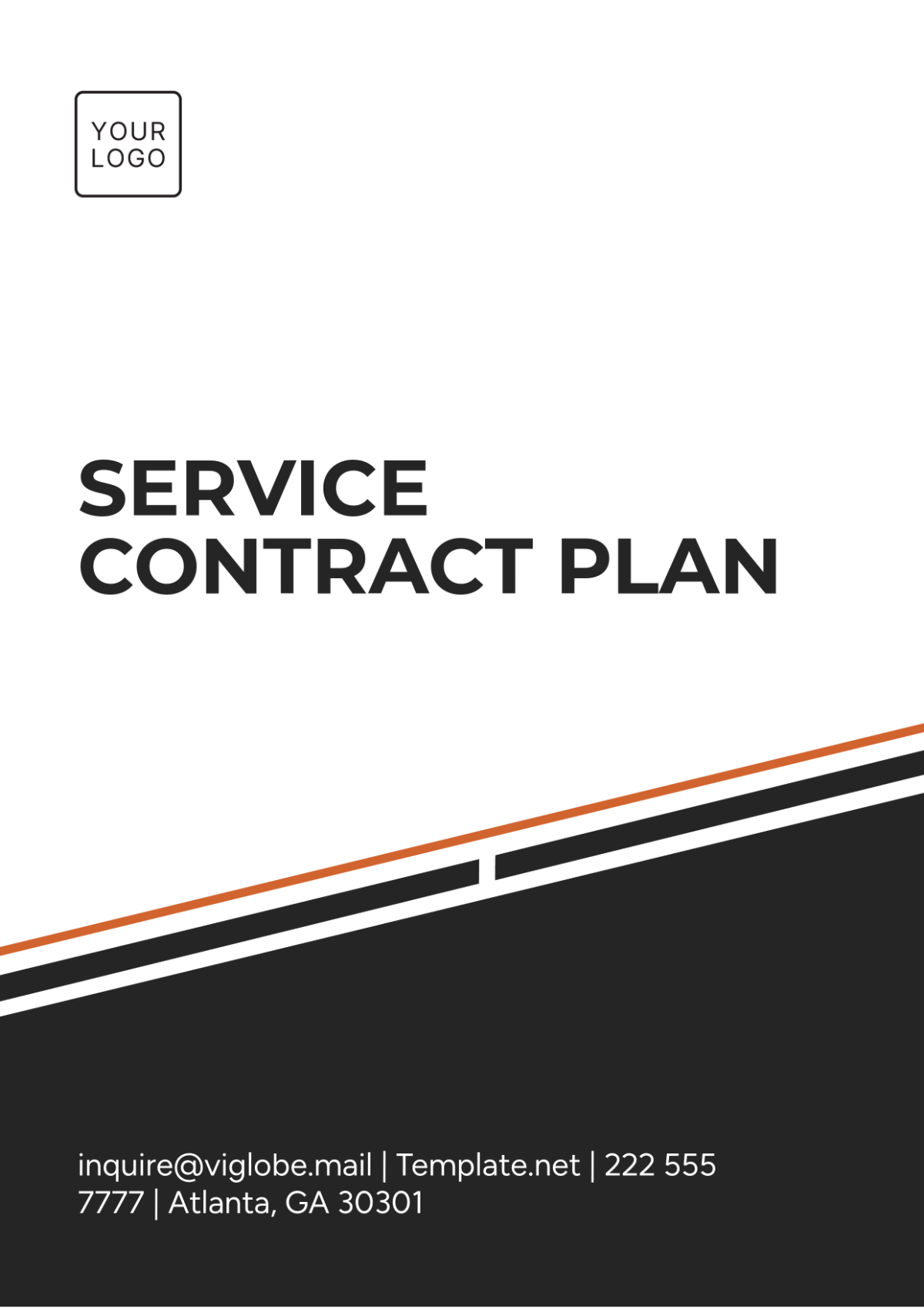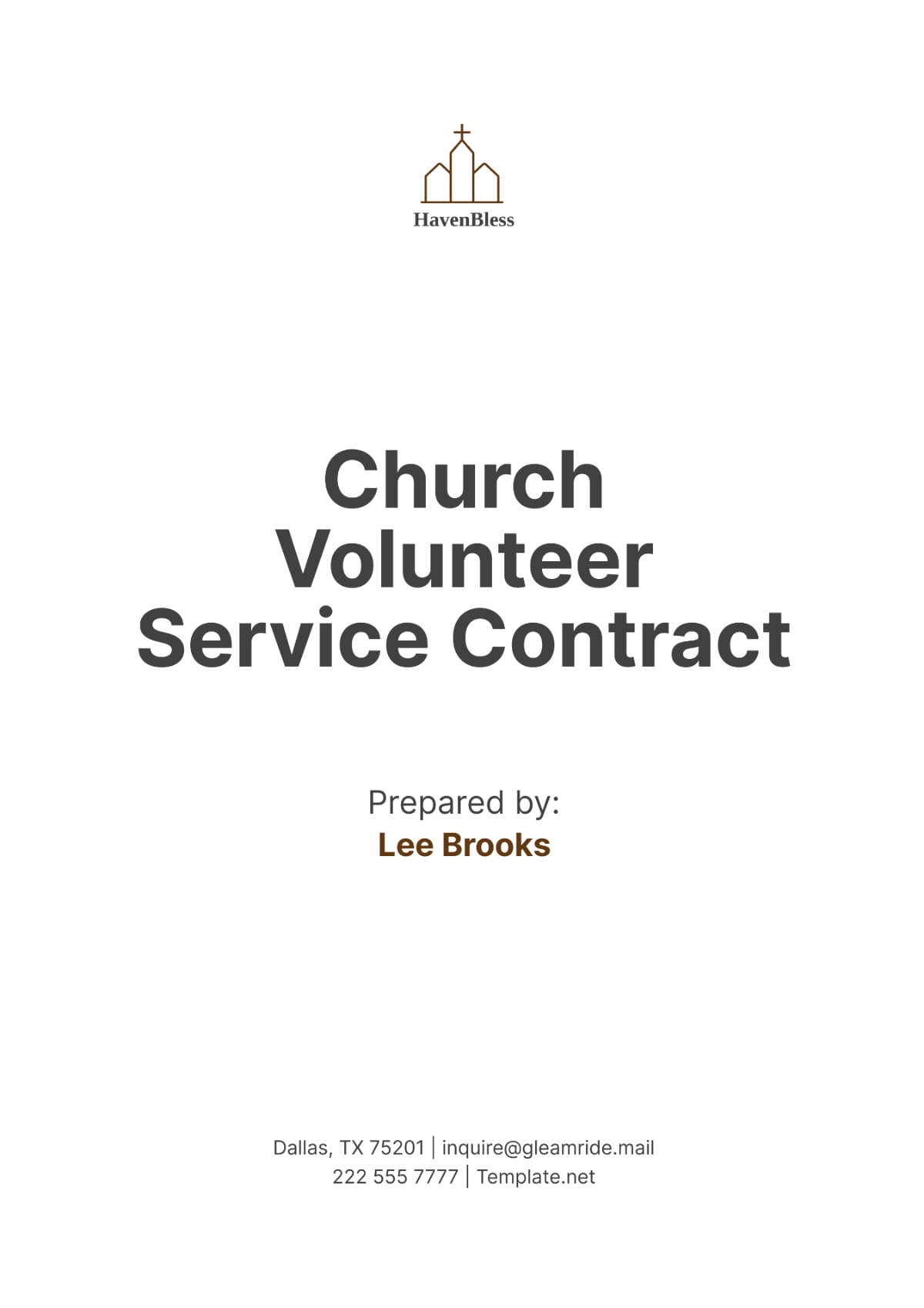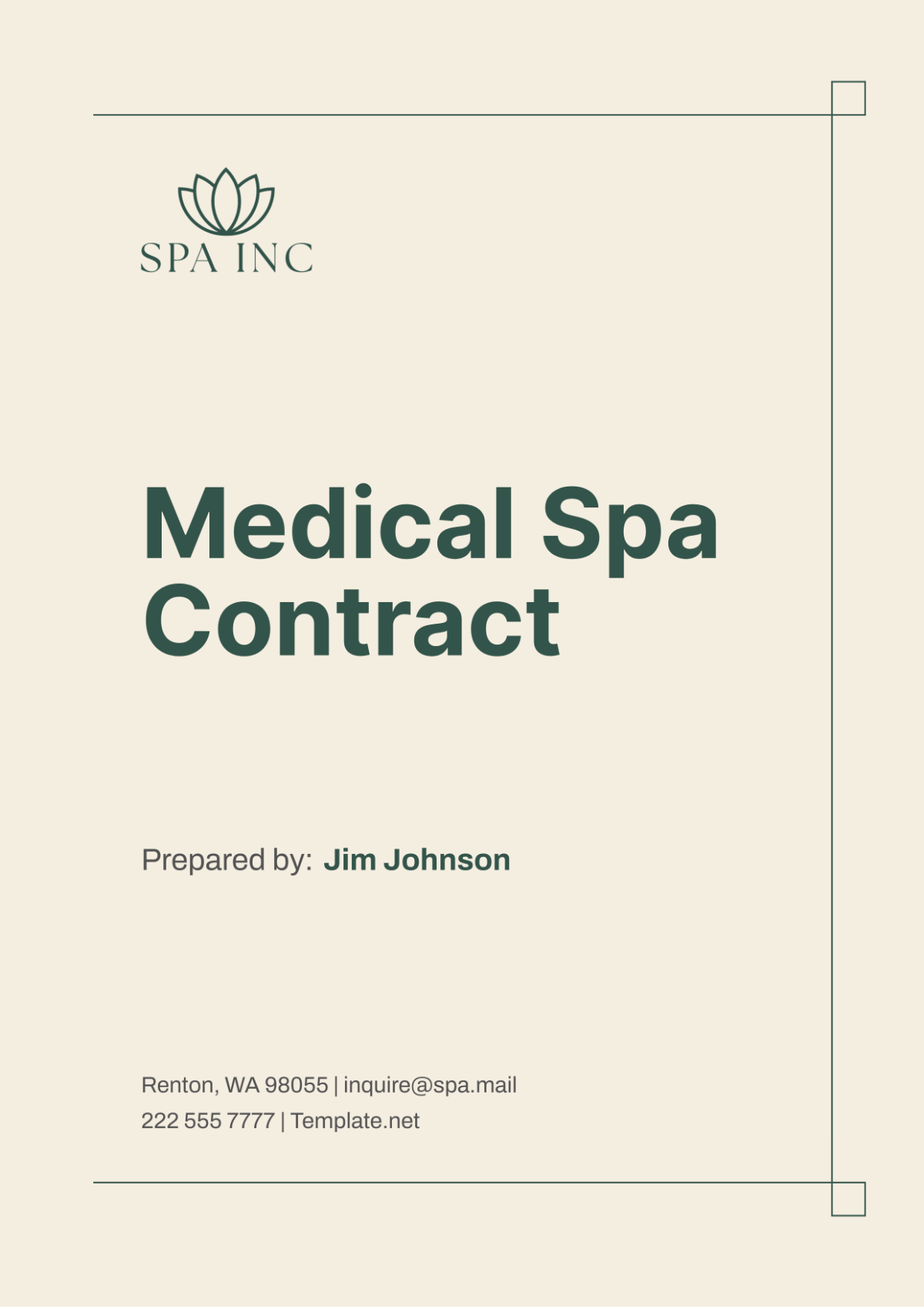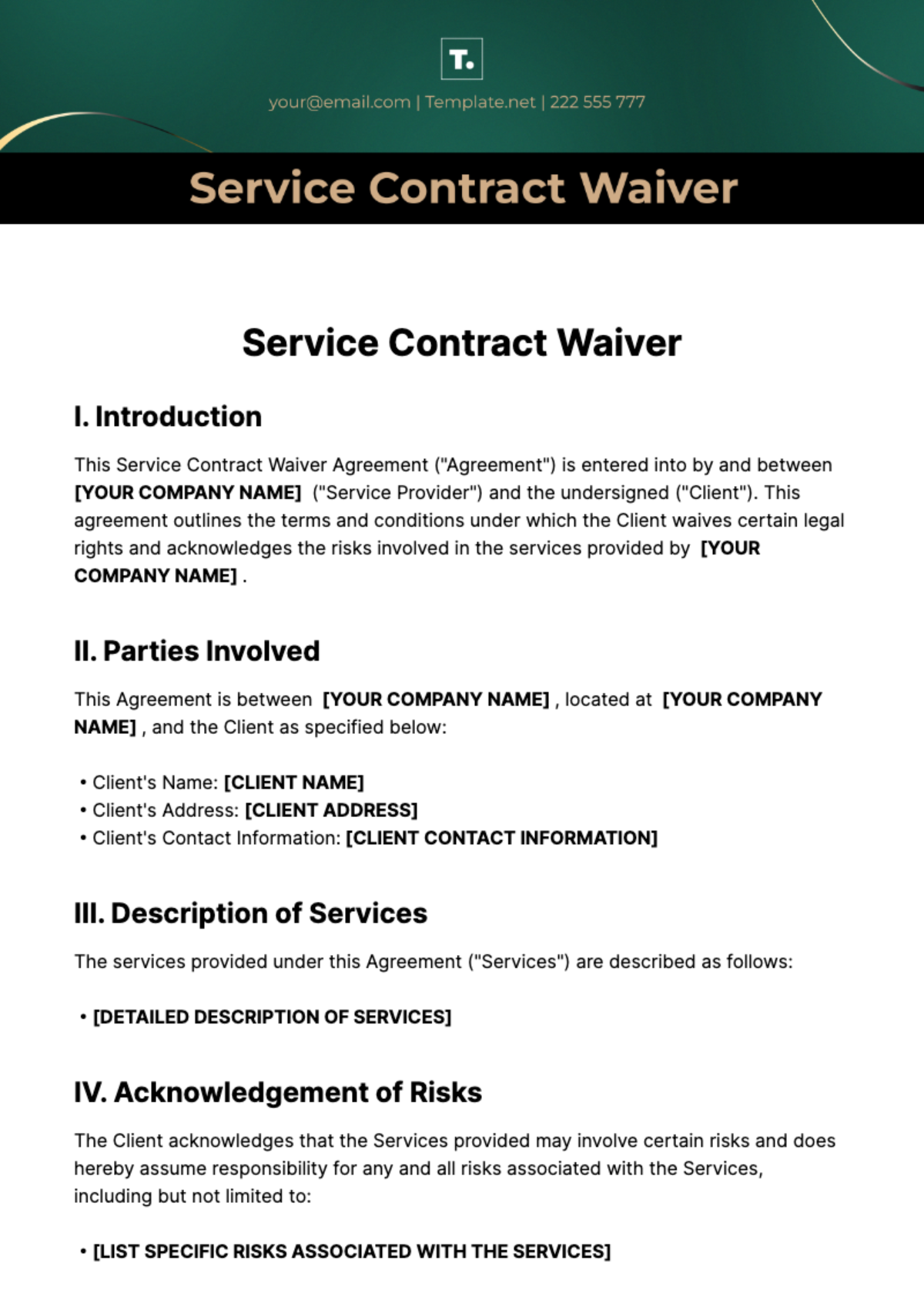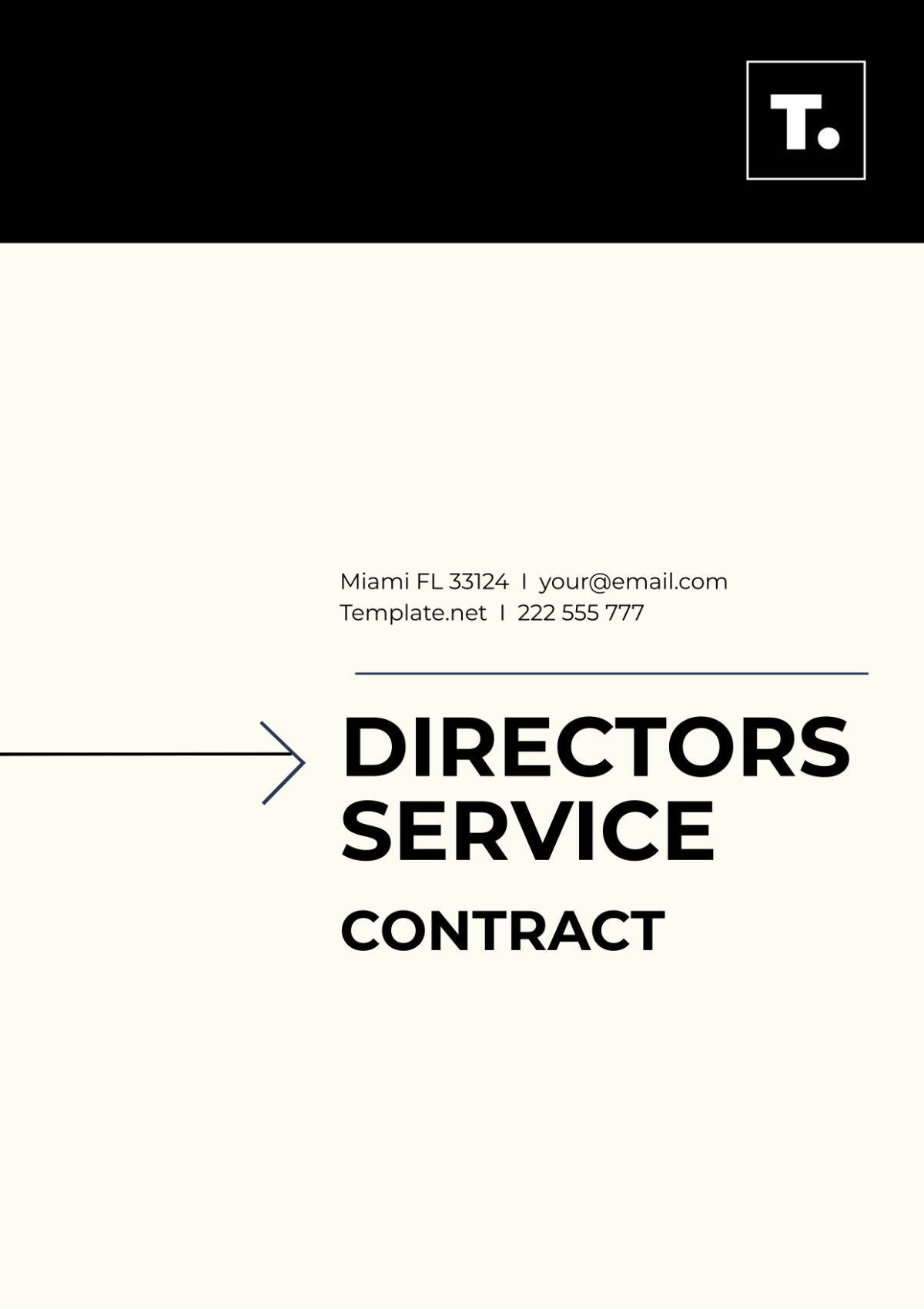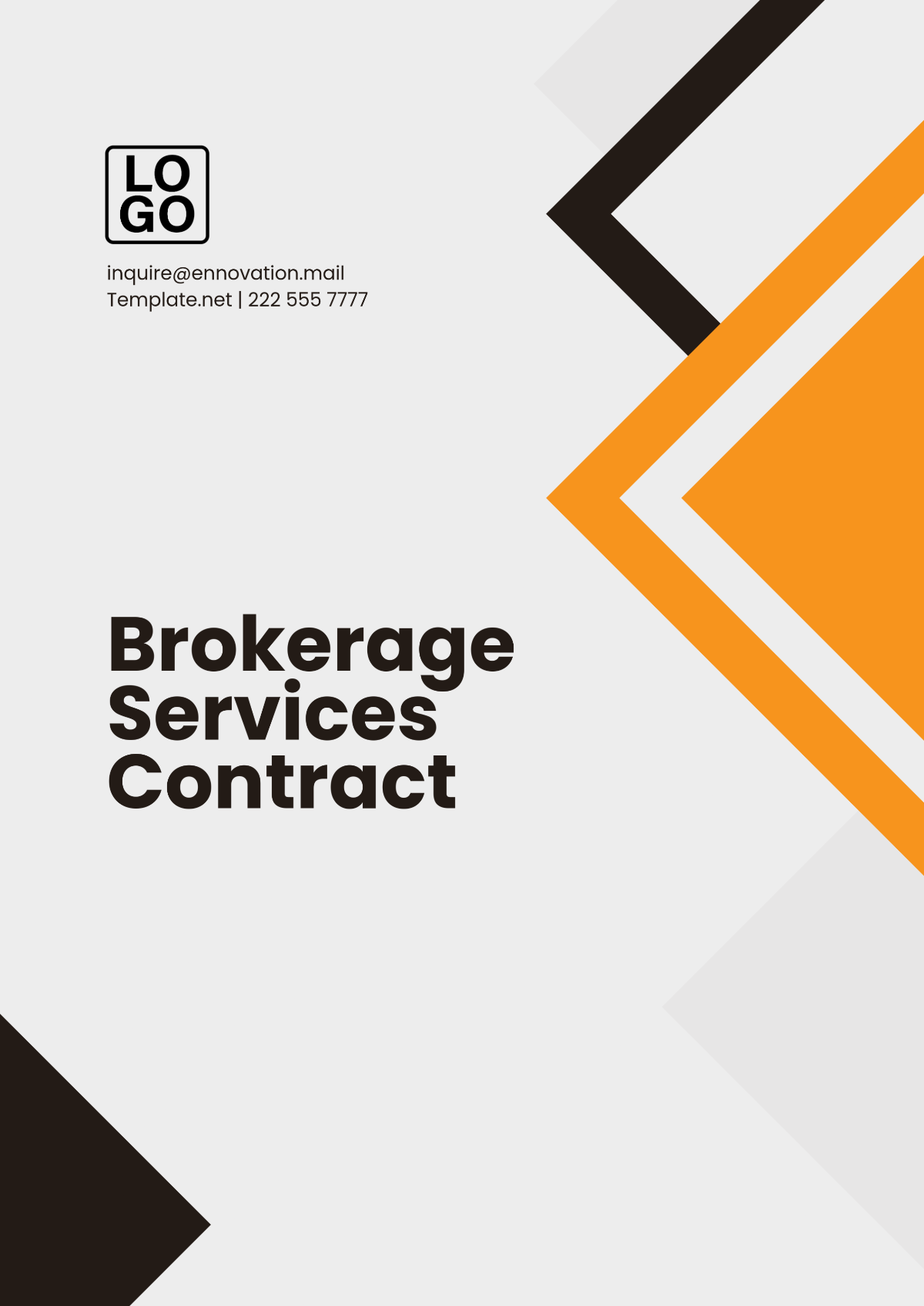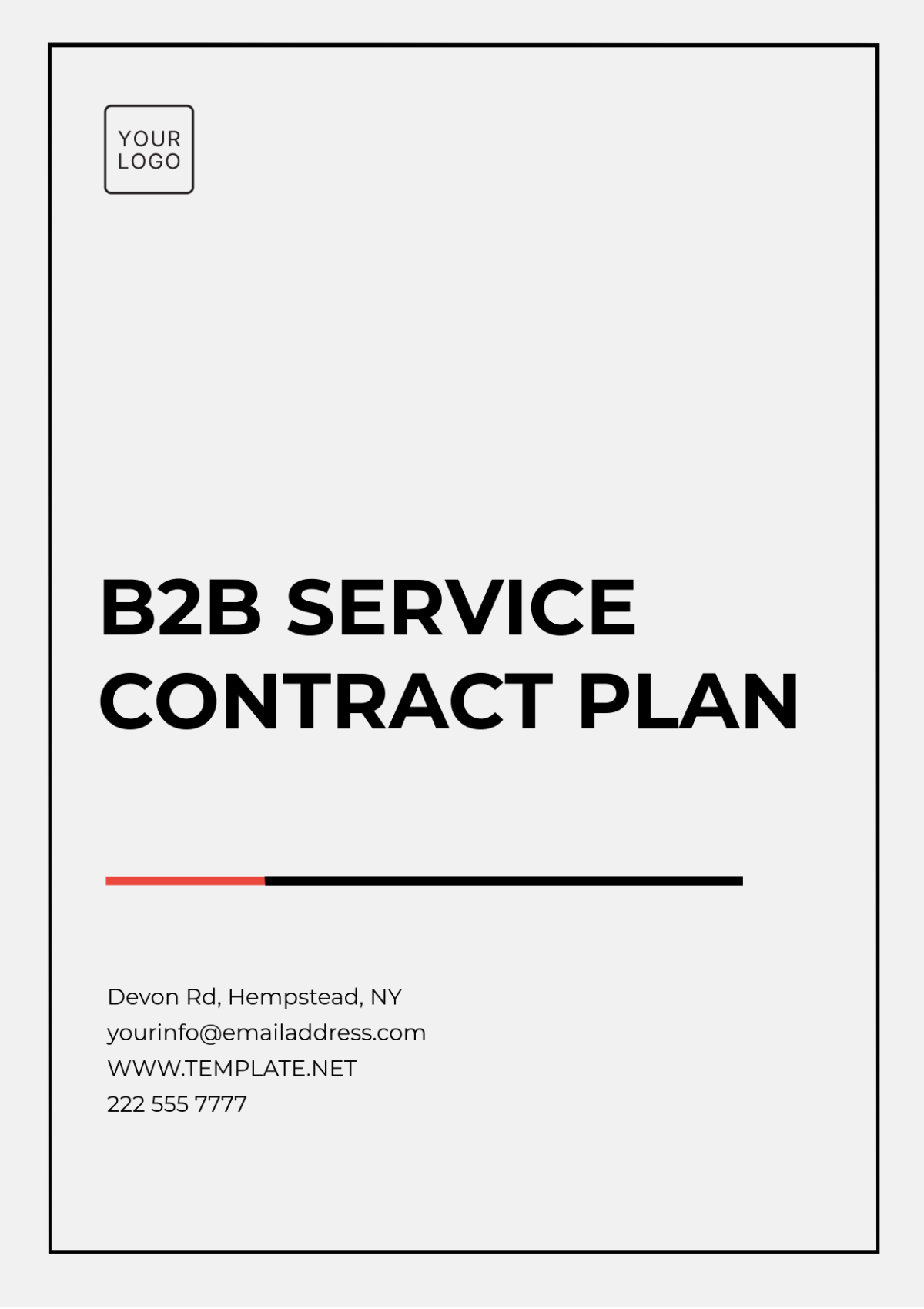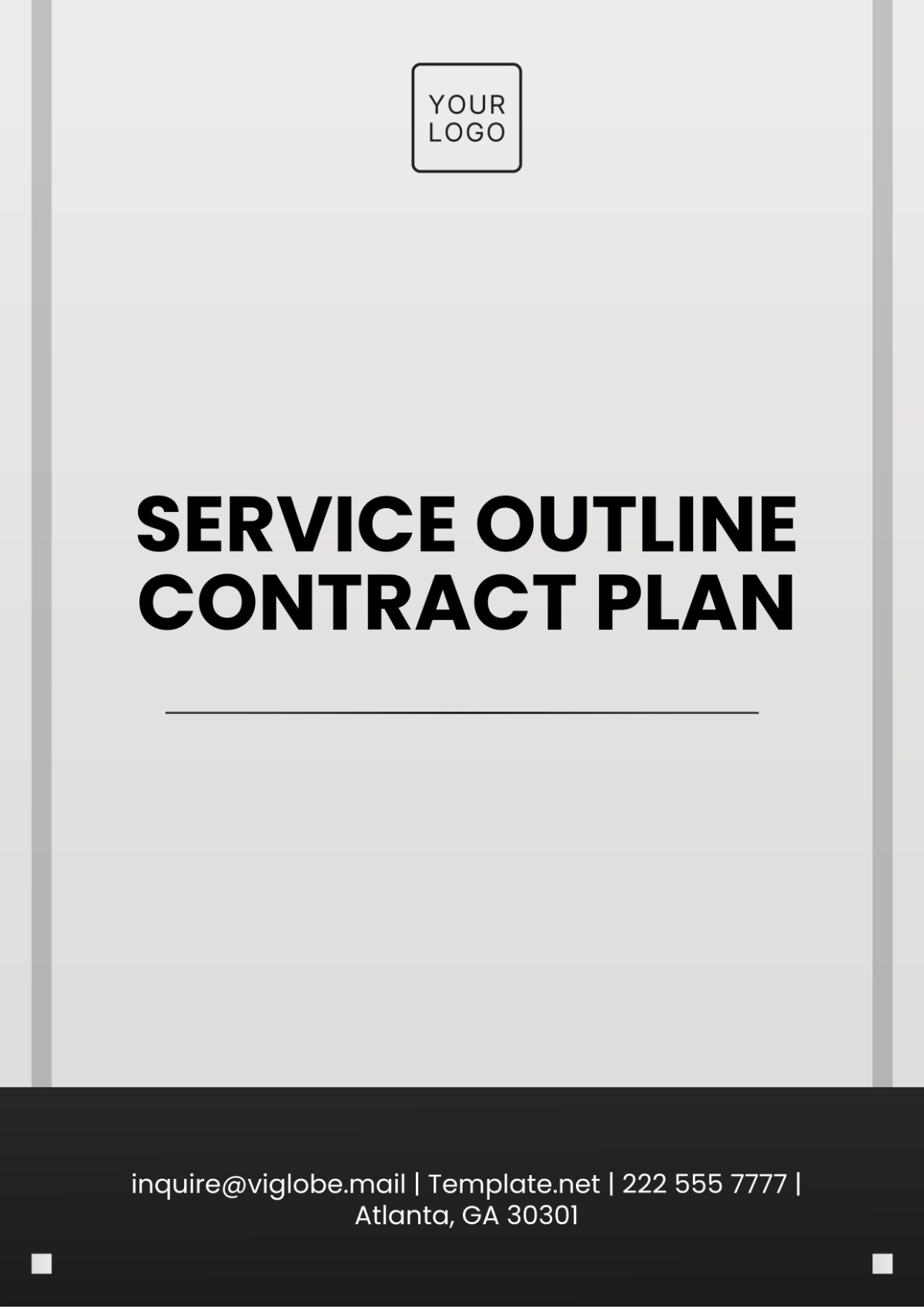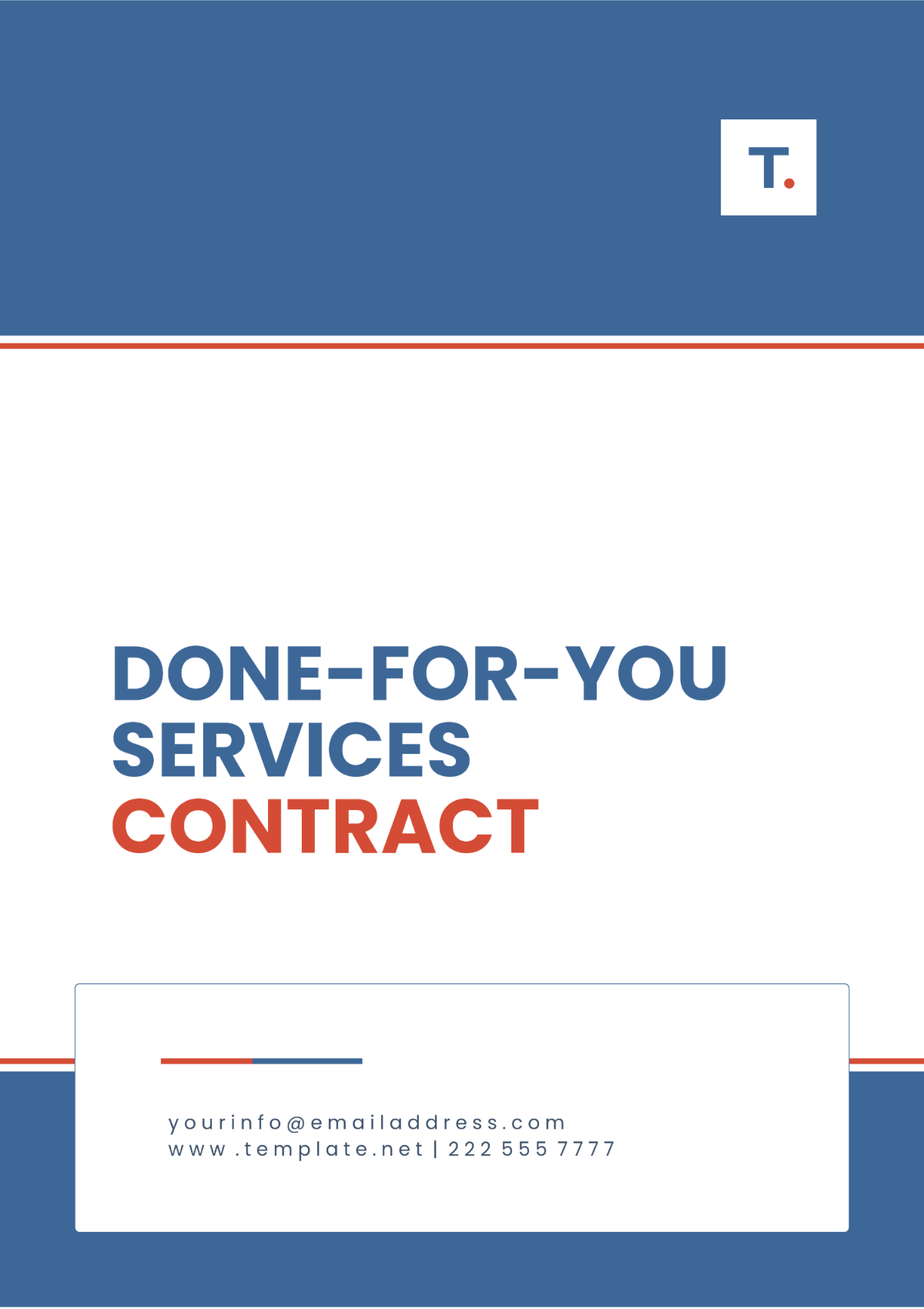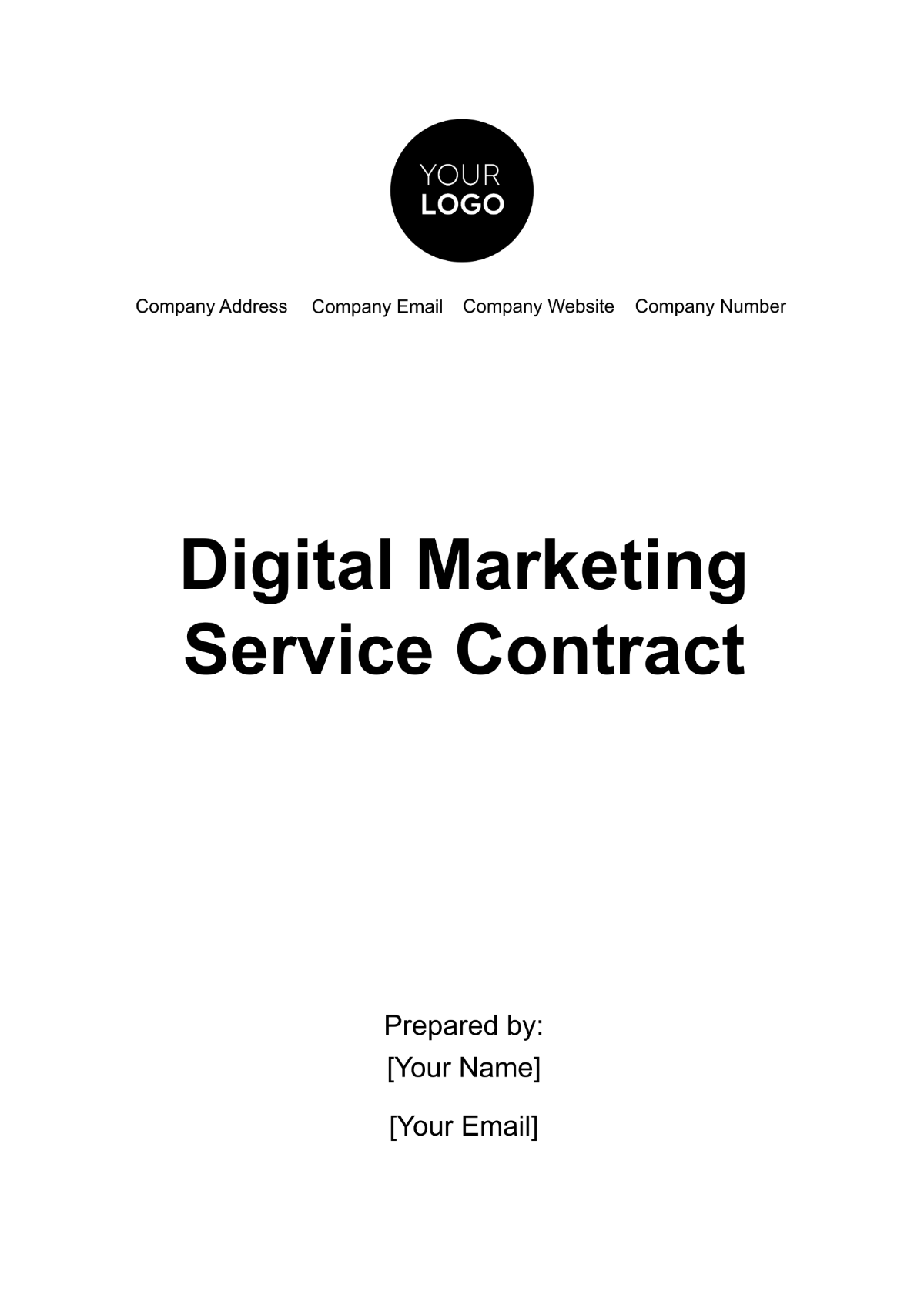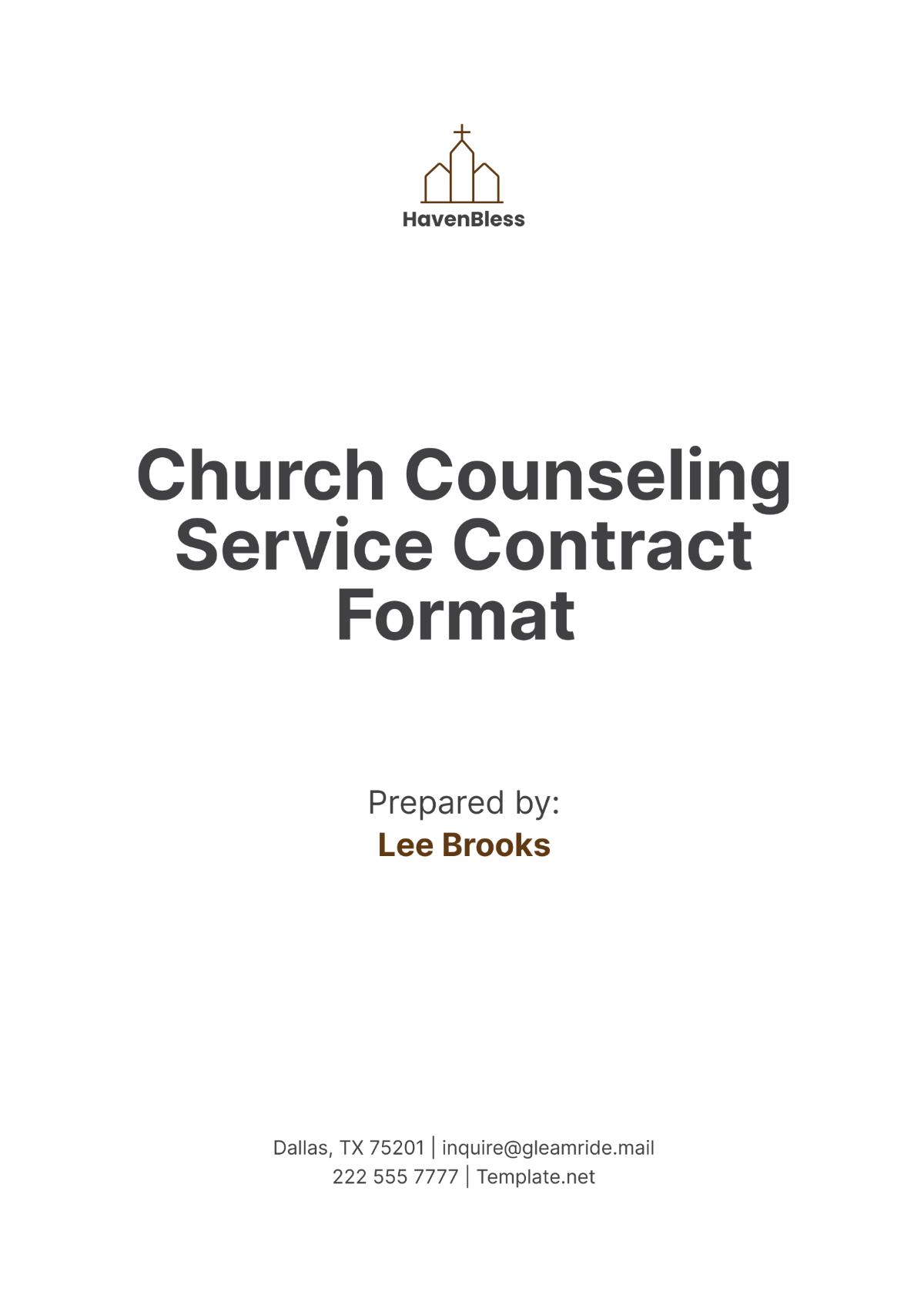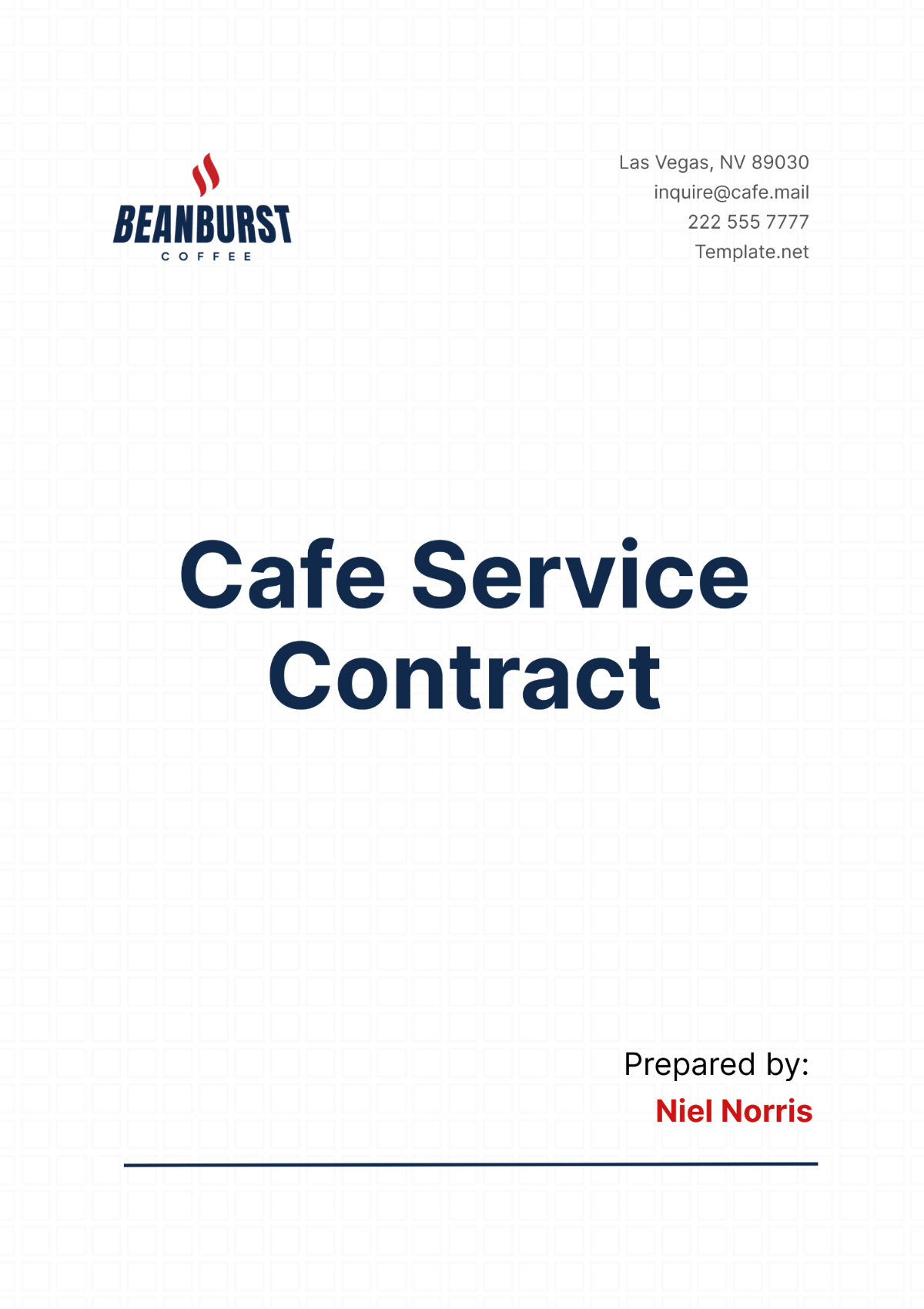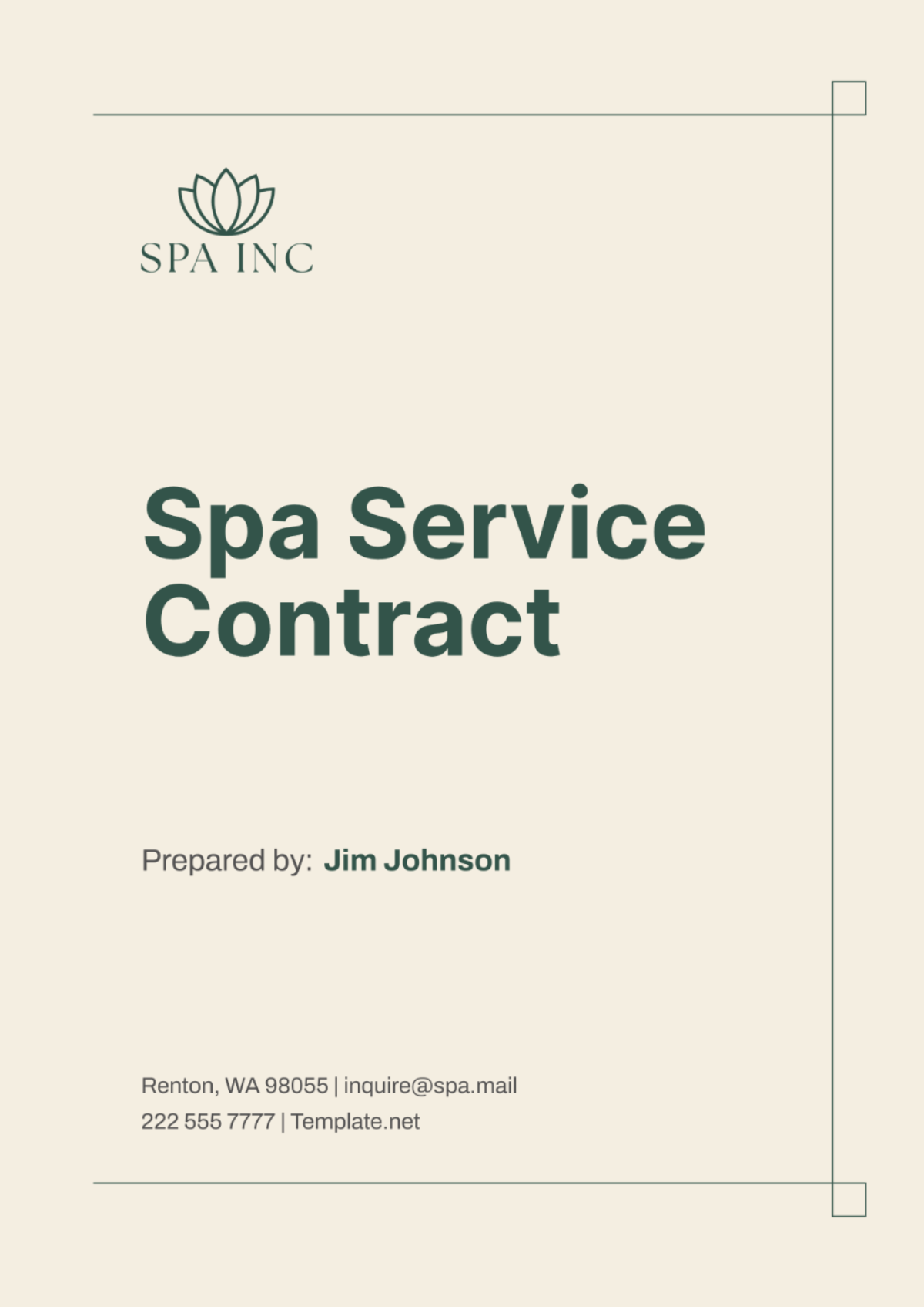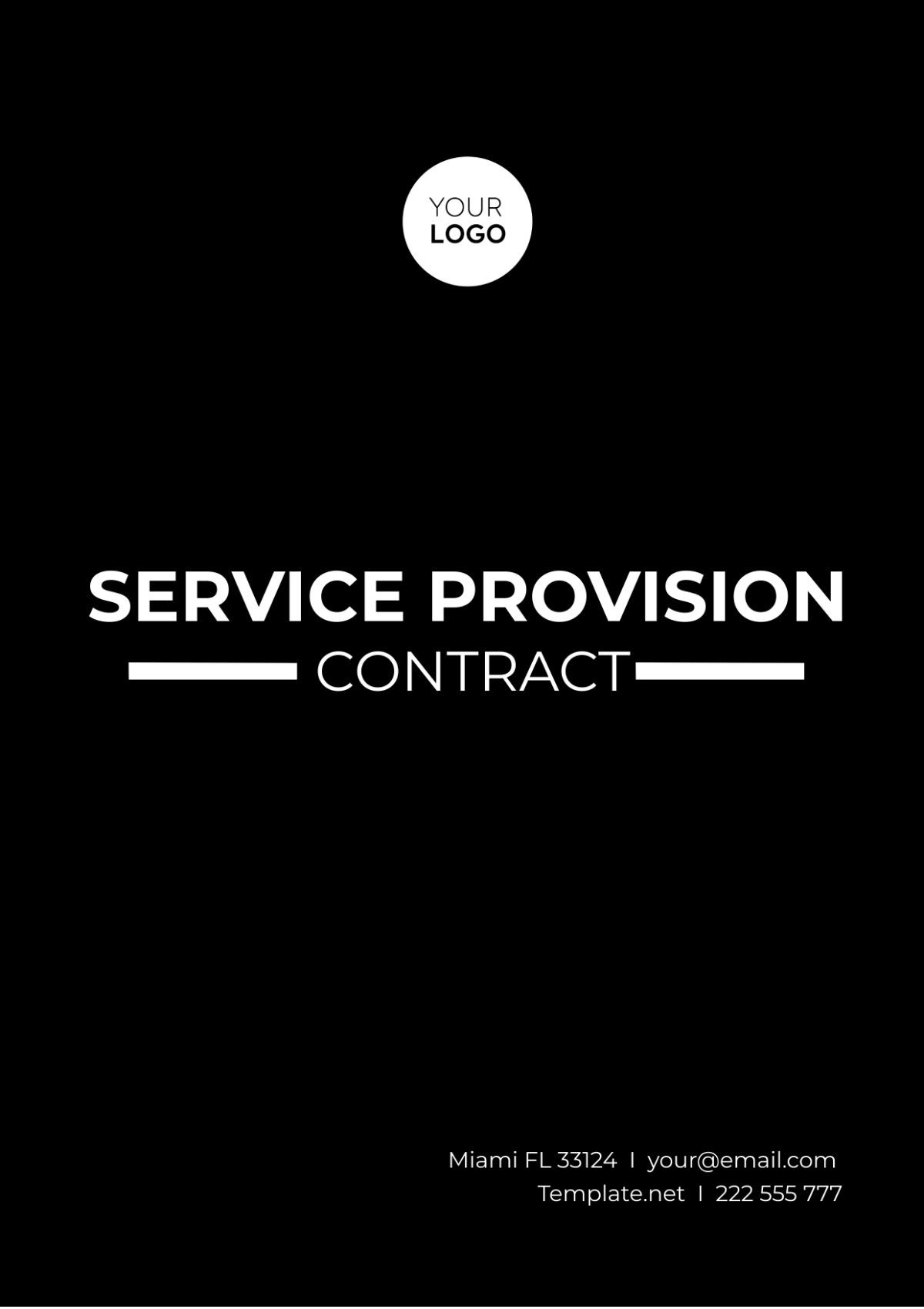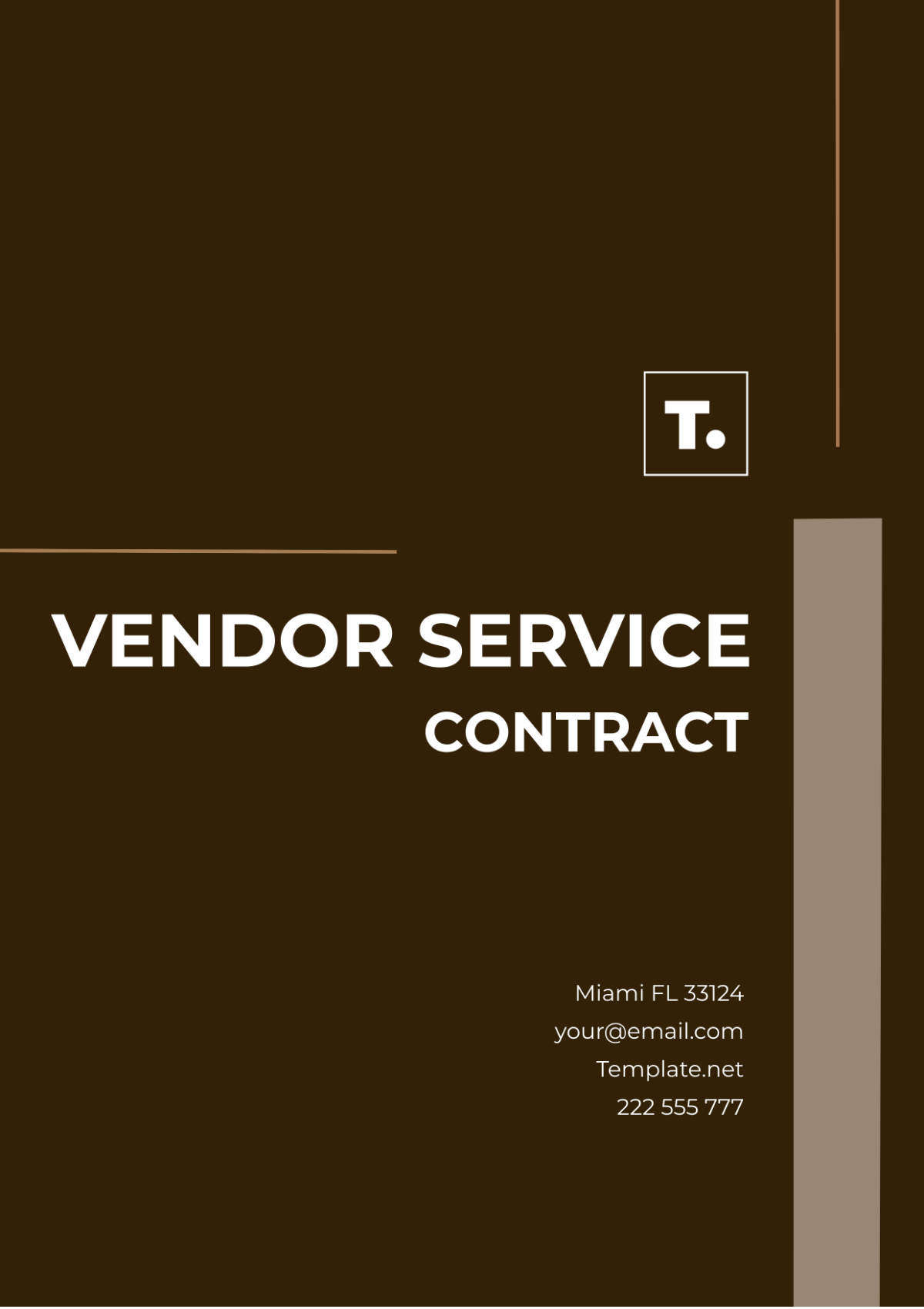Service Level Agreement Contract
This Service Level Agreement Contract ("Contract") is entered into on [Date] between [Your Name], located at [Your Company Address], from now on referred to as the "Provider," and [Customer's Name], located at [Customer's Address], from now on referred to as the "Customer."
1. Services Provided
The list of services provided will vary depending on the nature of the contract between the provider and the customer. This is the sample list of services that could be included:
1.1 Web Hosting Services:
Provision of server space
Website setup and configuration
Maintenance of server infrastructure
1.2 Technical Support:
Assistance with software installation and configuration
Troubleshooting technical issues
Guiding system usage
1.3 Network Infrastructure Services:
Setup and maintenance of network equipment (routers, switches, etc.)
Monitoring network performance
Implementing security measures
1.4 Cloud Computing Services:
Provision of cloud-based storage
Deployment and management of virtual servers
Backup and disaster recovery services
1.5 Software as a Service (SaaS):
Access to software applications hosted on the provider's servers
Updates and patches for the software
User support for software-related issues
1.6 Managed IT Services:
Remote monitoring and management of IT systems
Patch management and software updates
Helpdesk support for end-users
1.7 Data Backup and Recovery:
Regular backups of customer data
Restoration of data in the event of data loss or corruption
Testing of backup systems to ensure reliability
1.8 Security Services:
Implementation of firewalls and intrusion detection systems
Security audits and vulnerability assessments
Incident response and threat mitigation
1.9 Consulting Services:
IT strategy development
Technology planning and procurement assistance
Project management and implementation support
1.10 Training and Education:
Provision of training materials and resources
Conducting training sessions for end-users
Providing documentation and user guides for systems and software
2. Service Level Objectives (SLOs)
The Service Level Objectives listed below have been mutually agreed upon and confirmed by both parties:
Uptime: The system will maintain a minimum uptime of 99.9% during the specified period of each calendar month.
Response Time: The Provider commits to responding to critical support requests within 30 minutes of receipt during standard business hours (9:00 AM - 5:00 PM, Monday to Friday, excluding public holidays).
Resolution Time: The Provider agrees to resolve critical system issues within 4 hours of acknowledgment during standard business hours (9:00 AM - 5:00 PM, Monday to Friday, excluding public holidays).
3. Metrics and Measurement
The measurement of performance will be conducted utilizing the subsequent listed metrics:
Uptime Measurement: Uptime will be measured utilizing continuous monitoring tools such as network monitoring software to track the availability of the services provided. The uptime percentage will be calculated based on the total time the service is available, excluding scheduled maintenance periods, divided by the total time.
Response Time Measurement: Response time will be measured from the moment a request is received by the Provider's system until acknowledgment is sent back to the Customer. This measurement will be conducted using system logs or monitoring tools that record the timestamp of the request and the timestamp of the acknowledgment.
Resolution Time Measurement: Resolution time will be measured from the time a request is received until the issue is fully resolved and verified by the Customer. This measurement will be conducted using a ticketing system or incident management software, which will track the timestamps of when the request was opened and when it was closed. The resolution time will be calculated as the average time taken to resolve issues of a specific type or severity level, considering only the time during which the issue was actively worked on.
4. Responsibilities
The following details outline the specific responsibilities that are intended to be carried out by the Provider and the Customer:
4.1 Provider Responsibilities:
Service Availability: The Provider shall ensure that the services are available to the Customer during the agreed-upon service hours, with a minimum uptime of 99.9%.
Monitoring and Maintenance: The Provider shall continuously monitor the performance and health of the services and perform regular maintenance to ensure optimal functioning.
Technical Support: The Provider shall offer technical support to address any issues or queries raised by the Customer during the agreed-upon support hours.
Security Measures: The Provider shall implement appropriate security measures to safeguard the Customer's data and prevent unauthorized access or breaches.
Backup and Disaster Recovery: The Provider shall maintain regular backups of the Customer's data and have a disaster recovery plan in place to minimize downtime in case of unforeseen events.
Performance Reporting: The Provider shall provide regular reports to the Customer detailing the performance metrics and adherence to the SLA.
4.2 Customer Responsibilities:
Access and Cooperation: The Customer shall provide the Provider with necessary access to systems, networks, and resources required to deliver the services effectively.
Compliance: The Customer shall adhere to all applicable laws, regulations, and policies related to the use of the services provided by the Provider.
Data Backup: The Customer shall be responsible for backing up their data regularly and ensuring the availability of backups in case of data loss or corruption.
Security Measures: The Customer shall implement appropriate security measures on their end to protect their data and systems from unauthorized access or breaches.
Reporting Issues: The Customer shall promptly report any service issues or concerns to the Provider and cooperate in troubleshooting and resolving them.
Feedback: The Customer shall provide constructive feedback to the Provider regarding the quality of services and any improvements or enhancements desired.
5. Escalation Procedures
Should there arise any issues in the service, the subsequent steps under the escalation procedures will be employed and adhered to:
5.1 Level 1 (Primary Support):
Description: Initial point of contact for all service issues.
Contact Point: Customer Service Hotline at [Your Company Number] or email at [Your Company Email].
Timeframe: Response within (30) minutes/hours of receiving the issue during regular business hours (Monday to Friday, 9:00 AM to 5:00 PM local time).
Responsibilities: The primary support team will log the issue, perform initial troubleshooting, and escalate to Level 2 if necessary.
5.2 Level 2 (Technical Support):
Description: Technical experts are available for advanced troubleshooting.
Contact Point: Technical Support Manager at [Your Company Number] or email at [Your Company Email].
Timeframe: Response within 2 hours of escalation from Level 1 support.
Responsibilities: The technical support team will investigate the issue further, provide advanced troubleshooting, and work toward resolution. If resolution is not possible within 4 hours, escalate to Level 3.
5.3 Level 3 (Management Escalation):
Description: Escalation to management for critical or unresolved issues.
Contact Point: Account Manager at [Your Company Number] or email at [Your Company Email].
Timeframe: Response within 4 hours of escalation from Level 2 support.
Responsibilities: The account manager will oversee the escalation process, coordinate resources, and ensure timely resolution. If resolution is not achieved within 8 hours, escalate to Level 4.
5.4 Level 4 (Executive Escalation):
Description: Final escalation point involving executive management.
Contact Point: Executive Contact at [Your Company Number] or email at [Your Company Email].
Timeframe: Response within 8 hours of escalation from Level 3 support.
Responsibilities: Executive management will intervene to expedite resolution, allocate additional resources if necessary, and ensure customer satisfaction.
5.5 Continuous Communication:
Throughout the escalation process, regular updates will be provided to the Customer at agreed-upon intervals for 2 hours until the issue is resolved.
In case of delays or changes in the resolution timeframe, proactive communication will be maintained to keep the Customer informed.
6. Remedies and Penalties
If the Provider fails to meet the agreed-upon service levels, the following remedies and penalties will apply:
6.1 Service Credits: In the event of service level breaches, the Provider will issue service credits to the Customer. Service credits will be calculated based on the severity and duration of the breach, as follows:
Minor Breach: For minor breaches, service credits equivalent to 5% of the monthly service fee will be issued. This percentage reflects the relatively low impact of minor breaches on the Customer's operations.
Major Breach: In the case of major breaches, service credits equivalent to 10% of the monthly service fee will be issued. This higher percentage reflects the greater impact of major breaches on the Customer's operations compared to minor breaches.
Critical Breach: For critical breaches, service credits equivalent to 20% of the monthly service fee will be issued. This substantial percentage reflects the severe impact of critical breaches on the Customer's business operations, necessitating a more significant compensation.
6.2 Financial Penalties: In addition to service credits, the Provider will pay financial penalties to the Customer for severe or repeated breaches of the SLA. Financial penalties will be assessed as follows:
For each day the service remains below the agreed-upon level of performance, the Provider will pay $100 to the Customer, up to a maximum of $5,000 per month.
This means that for each day the service fails to meet the agreed-upon performance level, the Provider will be liable to pay $100 to the Customer. However, the total penalty for any given month will not exceed $5,000, even if the service experiences multiple days of non-compliance.
6.3 Escalated Response: In case of repeated breaches or critical service failures, the Provider will escalate its response efforts. This may include assigning additional resources, expedited troubleshooting, or engaging senior technical staff to resolve the issue promptly.
6.4 Service Improvement Plan: If the Provider consistently fails to meet the agreed-upon service levels over a specified period, both parties will collaborate to develop a service improvement plan. This plan will outline specific actions to address deficiencies and improve service performance within a defined timeframe.
6.5 Contract Termination: In extreme cases where the Provider repeatedly fails to meet service levels despite remedial efforts, the Customer reserves the right to terminate the contract without penalty, upon written notice to the Provider.
7. Termination Clause
7.1 Termination Conditions: This contract may be terminated by either party under the following circumstances:
a. Material Breach: If either party commits a material breach of any provision of this agreement and fails to remedy such breach within 30 days of receiving written notice from the other party specifying the breach.
b. Insolvency or Bankruptcy: If either party becomes insolvent, bankrupt, or enters into receivership or liquidation proceedings.
c. Force Majeure: If the performance of this agreement is prevented or delayed by any cause beyond the reasonable control of the parties, including but not limited to acts of nature, war, terrorism, strikes, or government actions, for a continuous period of 60 days.
7.2 Notice Period: The terminating party shall provide written notice of termination to the other party at least 30 days before the intended termination date, specifying the grounds for termination.
7.3 Associated Costs: If circumstances arise leading to termination:
a. If termination is due to a material breach by one party, the breaching party shall be liable to compensate the non-breaching party for any damages incurred as a direct result of the breach.
b. If termination is due to insolvency or bankruptcy of one party, no additional costs shall be imposed on the non-insolvent party.
c. If termination is due to force majeure, neither party shall be liable for any costs associated with the termination.
7.4 Return of Property: Upon termination of this agreement, both parties shall promptly return any property, including but not limited to equipment, documents, and confidential information, belonging to the other party.
7.5 Effect of Termination: Termination of this agreement shall not affect any rights or obligations that have accrued before termination, including but not limited to payment obligations, confidentiality obligations, and indemnification obligations.
8. Confidentiality and Security
Both the parties involved in this contract have given their consent, pledged, and are committed to ensuring that they are responsible for maintaining not only the confidentiality but also the security of any private or sensitive information that is or will be exchanged as part of their collaboration under the terms and conditions stated in this agreement.
9. Governing Law
The interpretation and legal implications of this contract shall be governed by, and construed by, the laws applicable within the jurisdiction of [Jurisdiction].
10. Entire Agreement
The Service Level Agreement Contract (SLA) that is presented here serves as the comprehensive contract that exists between the involved parties on the subject matter tackled within this document. This SLA essentially extinguishes and replaces any prevailing agreements and understandings. This overhaul of past arrangements applies to both contracts and understandings that were documented in writing and those that were discussed verbally between the parties.
In Witness Whereof, the parties hereto have executed this Service Level Agreement Contract as of the date first above written.

[YOUR NAME]
[DATE SIGNED]

[CUSTOMER'S NAME]
[DATE SIGNED]








